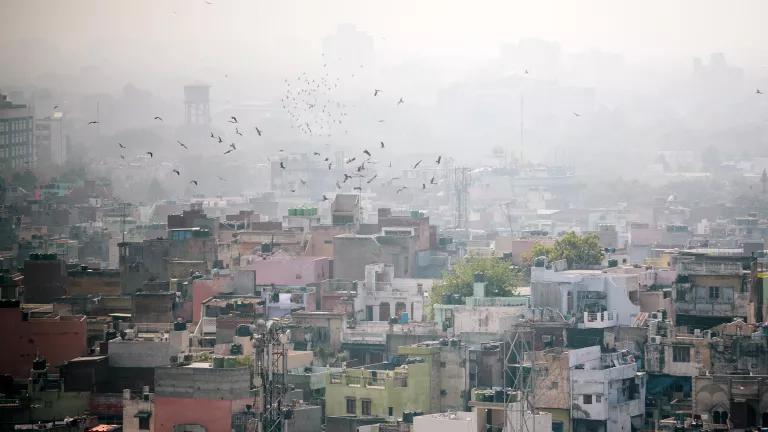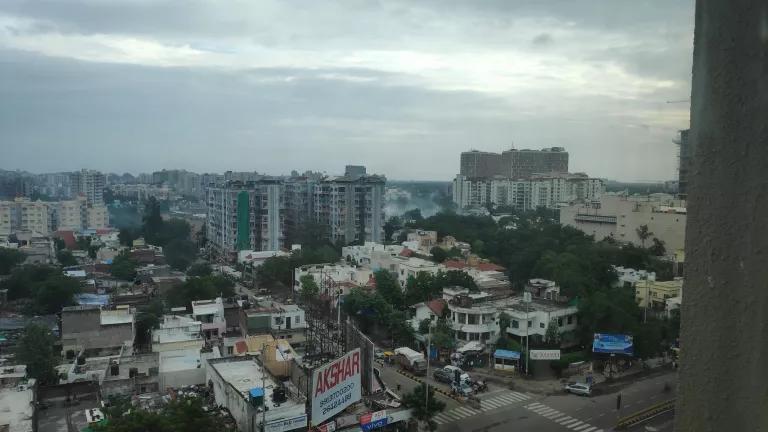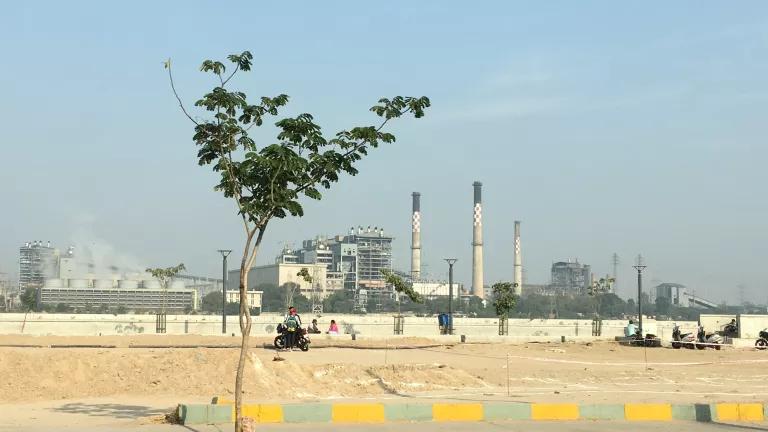India: Air Quality and Health Risks from Climate and COVID19
To examine how communities in India can strengthen actions to protect public health, international and local experts recently came together for a virtual roundtable discussion.

A smoggy day in Delhi, India
iStock
With rising air pollution level in India and the respiratory threats from COVID-19, the need to protect public health has taken on a new urgency. To examine how communities in India can strengthen actions to protect public health, international and local experts recently came together for a virtual roundtable discussion, “Air quality and public health in India: risks from climate change and COVID-19.”
Because air quality problems in India are often driven by pollution from the same fossil fuels that accelerate climate change, actions to reduce harmful emissions can achieve major wins for public health in the near-term and long-term, for the environment, and for India’s economy.
While New Delhi’s air pollution crisis receives more media attention, over 80% of Indian cities struggle with unhealthy air quality. A 2018 study found that outdoor air pollution causes a staggering 670,000 deaths each year in India. The Indian government launched a National Clean Air Program (NCAP) in early 2019 to address air pollution. The NCAP aims to reduce pollution levels by 20-30% by 2024 in 122 cities where current air pollution levels exceed the national health-based standards.
Cities, such as New Delhi, Ahmedabad and Pune, are taking action to improve air quality and protect public health. These actions include implementing health risk communication plans, strengthening air monitoring networks, adopting electric vehicles, bolstering regulatory compliance, and better controlling industrial emissions. Strong communication channels focused on air quality and health can also help cities improve their air quality through local actions.
Air Quality Roundtable Highlights and Speaker Quotes
NRDC, along with partners at the Indian Institute of Public Health, Gandhinagar (IIPH-G), Centre for Environment Education (CEE), Indian Institute of Tropical Meteorology, Pune (IITM), Gujarat Energy Research and Management Institute (GERMI), and Climate Trends hosted "Air quality and public health in India: risks from climate change and COVID-19," to engage with stakeholders on air pollution, climate change, and public health communication.
Key points highlighted during the discussion included:
- How air pollution worsens the health impacts of the COVID-19 pandemic.
- Targeted city-based health risk communication strategies on air pollution for vulnerable populations.
- The current and future health benefits of air pollution reduction and climate change interventions.
- Strengthening city-level clean air actions through prioritization of public health interventions.
Launched today, the Pune Air Information and Response (AIR) Plan, developed by the Pune Municipal corporation and knowledge partners, CEE, IITM, and NRDC and partners is a health-based program designed to protect and increase awareness among residents on air pollution. The AIR Plan links the air quality index (AQI) developed by IITM with the community.
Following are quotes from the speakers involved in today’s roundtable:
“Let's use the COVID-19 challenge as a wake-up call to be better prepared and to acknowledge the threat that air pollution poses to public health. These issues of air pollution and climate change are about the health of the people. If we work together, we can protect what is the most important—our families.” —Gina McCarthy, President and CEO, NRDC
“The Pune Municipal Corporation (PMC) is very happy to release the Pune AIR Plan with partners NRDC, IIPH-G, and CEE. The current pandemic has brought to focus the importance and the urgency of keeping public health as the focus of our efforts at environment protection. Pune AIR Plan is one such example which keeps health risk communication at the heart of air quality management in our cities. We at the PMC are looking forward to implementing the Plan focused on vulnerable communities and drawing up city specific mitigation actions for air pollution." —Mangesh Dighe, Environment Officer, Pune Municipal Corporation
“Keeping health as the focus of its action on air pollution, in 2017, the city of Ahmedabad developed the first of its kind health risk communication plan on air pollution called the AIR Plan. Since then the city has been implementing the health-based components of the plan focused on vulnerable sections of the population, raising awareness on air pollution. We are happy to now see other cities in the country adopt the plan and we look forward to cross learnings and experience sharing." —Dr. Chirag Shah, Deputy Health Office, Ahmedabad Municipal Corporation.
“Continuous assessment of crucial public health indicators at a granular, disaggregated level has the potential to help us identify and prioritize interventions that can improve the efficiency and effectiveness of climate change interventions. Measuring air quality linked health indicators can help Ahmedabad and other cities to achieve their NCAP targets and create healthy, sustainable communities." —Dr. Dileep Mavalankar, Director, IIPH-G
“It’s exciting to consider that our responses to the overlapping health crises of 2020 might have common solutions that can be served by strengthening health data collection , air quality monitoring, moving toward cleaner energy sources, promoting climate resilience, and estimating future benefits to health from these actions. It’s our hope that implementing this kind of work can motivate transformative actions and deliver health benefits to people now struggling to stay healthy.” —Dr. Kim Knowlton, Senior Scientist & Deputy Director, Science Centre, NRDC
“Gujarat is a leader in deploying renewable energy, as well energy efficient appliances and standards. In the coming decade, we hope to work with myriad stakeholders – private organizations, government regulators, civil society groups and citizen to fulfil our commitments to climate action as well to create healthy, sustainable cities for our communities" —Akhilesh Magal, Head, Advisory, Renewable Energy, Environment & Energy Efficiency, GERMI.
“Direct community engagement and education working with the city leadership is critical to protecting the most vulnerable from air pollution.” —Sanskriti Menon, Senior Programme Director, CEE
“Protecting our lungs is more important than ever. We don't need the pandemic to achieve clean air. The solutions are available to clean the air and reduce climate change. We need to get to work.” —Anjali Jaiswal, Senior Director, NRDC
“We need to understand the cumulative experience from COVID-19 and air pollution to protect the most vulnerable.” —Dr. Vijay Limaye, Health Scientist, NRDC
“Communication, education and information with the community is essential to protecting public health from air pollution.” —Polash Mukerjee, Air Quality Expert and Consultant, NRDC
NRDC Air Quality Resources
- Ahmedabad Air Information and Response (AIR) Plan
- Pune Air Information and Response (AIR) Plan
- Clearing the Air: A Review of 10 City Plans to Fight Air Pollution in India - Issue Brief
- Clearing the Air: Highlighting Actions to Reduce Air Pollution in India - Fact Sheet
- Air Pollution in Pune: Research and Evidence for Developing the Pune Air Information & Response (AIR) Plan
- Protecting Health From Increasing Air Pollution in Ahmedabad - Issue Brief
- Getting the Word Out: Health Risk Communications Strategies for Ahmedabad’s AIR Plan (PDF)
- Air Quality Information, Education and Communication (IEC) Materials – in Gujarati and English
Polash Mukerjee and Jessica Korsh contributed to this blog post. This blog was modified to correct formatting.




